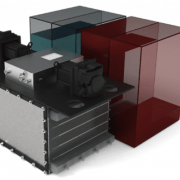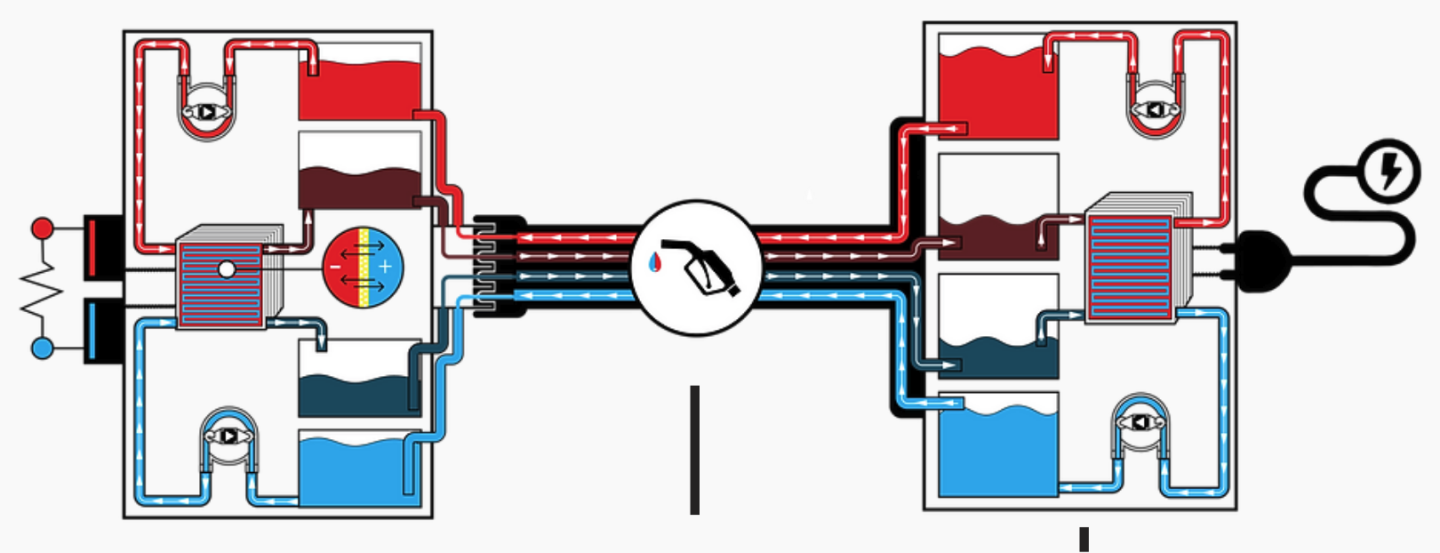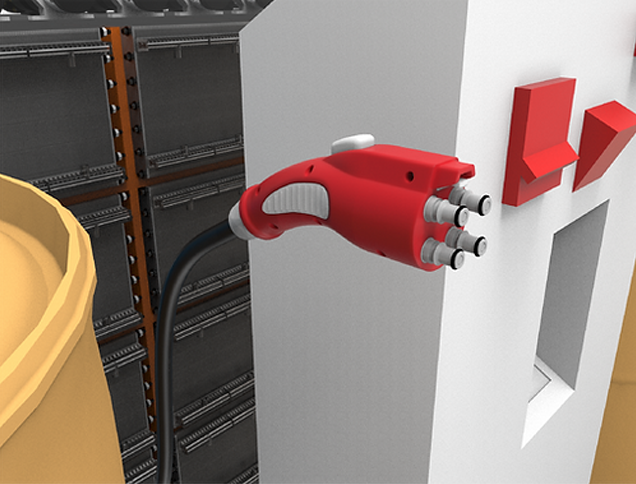Influit moves to commercialize its ultra-high density liquid batteries
Illinois Tech spinoff Influit Energy says it’s coming out of stealth mode to commercialize a rechargeable electrofuel – a non-flammable, fast-refuelling liquid flow battery that already carries 23% more energy than lithium batteries, at half the cost.
Very much targeted at vehicles and aircraft, Influit’s “nanoelectrofuels” offer an alternative to current battery tech with what appears to be a pretty compelling list of pros and cons.
The company pitches its tech as a new type of flow battery – we’ve written plenty about these in the past; typically they involve two chemical liquids that are pumped over opposing sides of an ion exchange membrane to create a flow of electric current. Energy density tends to be low, because only so much battery material can be dissolved in a liquid before it starts to settle at the bottom of the tank, making it useless. This low density tends to relegate flow batteries to big, slow, cheap grid-level storage system projects and the like.
Influit says it solves this issue by using infinteissimally tiny solid nanoparticles of active metal oxide battery material suspended, rather than dissolved, in its base fluid, such that random Brownian motion alone is enough to keep the particles from settling to the bottom. It claims its nanoparticles are surface-modified to prevent agglomeration and reduce the viscosity of the solution, to the point where its electrofuels flow more or less like motor oil.
This will require a whole ecosystem; Influit is developing not only the electrofuel liquids, but the fuel cell-like onboard devices that’ll extract energy from those fuels, the complex tank and fuel management systems that will keep the fluids separate and retain the spent fuel for recycling, the electrofuel retail equipment, the systems needed to “recharge” spent fuel, and the refineries needed to manufacture these nanofuel liquids in the first place.
There will be multiple ways to top up once you’re running low. “Rapid refueling pods” will offer the ability to straight-up swap spent fuel out and put fresh stuff back in. But influit says you won’t lose your ability to plug in and recharge the fuel in the same way EV owners do now – either slowly through a wall socket, or rapidly through a higher-power charging station.
And there are other advantages, too; Influit says its fuels are non-flammable and non-explosive – indeed, poured on a fire, they’ll actually put it out. In a catastrophic containment failure that allows the anolyte and catholyte liquids to mingle, there’s a slight increase in temperature for a little while and that’s about it. They work happily across a wide range of operating temperatures between -40 to 80 °C (-40 – 176 °F). They use no lithium, no heavy metals or rare Earth minerals, making them much cheaper – but also making sure source materials are abundant, and supply lines don’t have to run through geopolitical leverage points like China.
Then there’s energy density. Influit says its Gen1 system will offer 23% higher energy density by volume than lithium-ion – that’s somewhere between 350-550 Wh/l at the system level, not just the electrolytes – and will cost half as much, although it’s unclear by what metric.
And it doesn’t stop there; the Gen2 system under development promises a massive 4-5X higher energy density than lithium-ion, at a third the cost. In terms of specific energy by weight, we’re talking a whopping 550-750 Wh/kg – again at the entire system level – for the next-gen system, which, once proven, would make these electrofuels very interesting to clean aviation types as well as automotive and marine concerns.
Influit has progressed to this point largely funded by US military and government agencies to the tune of over US$12 million; DARPA is very interested in non-flammable, quick-refueling electrification options for obvious reasons, and Influit is developing an EV to demonstrate its system. DARPA is also kicking in to help optimize and scale up manufacturing, hoping to reduce the mass and volume of the battery systems in the process.
Source:Influit moves to commercialize its ultra-high density liquid batteries







